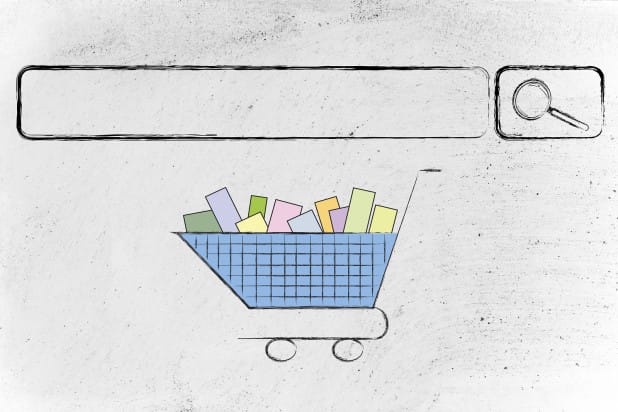

Guest Post by Payfirma
With total sales in North America alone at 5.3 trillion, the eCommerce market only continues to grow. One of the biggest draws to online shopping is the convenience. That same convenience should be consistent before, during, and after checkout. Speed and simplicity are paramount in the buying experience that today’s customers have come to expect. Here are 4 tips to reduce friction in the checkout experience.
If consumers are confused about where to go on your site or inundated with information, the friction is too great, and you need to simplify your navigation. Clear web copy and a lack of interruptions help move your customer through your site to checkout with minimal effort exerted on their part.
Coupled with intuitive navigation, product information and checkout fields should be easily identifiable and readable. Avoid a plethora of features for each product, provide just enough information to help customers make their decision without being overwhelmed.
Once at checkout, some payment gateways will direct the customer away from the site to enter their payment details. But the last thing you want to do is to redirect them to a site that doesn’t have your branding. This may deter consumers from completing the process; security is key for online shoppers. To avoid this friction, use a payment solution that provides a directly integrated gateway to keep the customer on your site or a gateway that allows you to customize the hosted payment page to look like one of yours.
The longer it takes for a consumer to check out, the more likely it is that they may abandon the cart, so the checkout process needs to be as time-efficient as possible. You can do this by reducing the required information customers need to input for checkout.
Prompting customers to create accounts and reminding them to log in will save them from filling out the same information for subsequent transactions. If they click checkout when logged in, their pre-saved address and payment details are auto-filled.
In the address section, place the zip code requirement first and use an algorithm that auto-fills the other relevant fields such as city and country. You can eliminate the card type field by employing an algorithm that recognizes the type of card by the number. Automatically have the cheapest shipping option checked – it’s one less field they’ll have to select. Customers can always change the shipping if they want but most will want the lowest option.
In addition to speed and ease, consumers these days crave a more personalized experience; they want their preferences to be recognized.
Data reveals relevant recommendations can increase revenue by up to 300%, improve conversions by 150%, and help boost the average order value by 50%. ·
Email similar items based on their past purchase history. Display product suggestions based on past search history when they visit your site.
When you offer the card types that your customers want to pay in, they’re more likely to purchase. For example, American Express is a favored option for U.S. customers, or consumers may want to pay with a certain card if they want to reap the benefits associated with using it (points, cash back, etc.). Give customers the option to pay in their own currency; it saves them from having to calculate exchange rates and helps them keep track of how much they’re spending. It’s important to let your customers pay however they like because they’ve come to expect this convenience of their shopping experiences and will not hesitate to go to your competitors who are catering to their preferences. Offer as many payment methods as possible, perhaps even alternative ones like bitcoin.
Online shopping is no longer exclusively accessible on a desktop, consumers are browsing and shopping across multiple devices wherever they are. It’s because of this consumer habit that your channels should be synchronized and cohesive; in other words, an omni-channel experience. Consumers should receive the same experience and be able to access the same information no matter what channel they choose.
With so many users on mobile devices, you need to optimize your site for mobile users. Even if you have a brick-and-mortar storefront, it’s essential that you offer a mobile experience to your consumers that are viewing your online store on their smart devices. An omni-channel experience allows customers to move across multiple platforms on their journey to checkout, which means online research and/or purchase is frequently done on a mobile device. Your site needs to be easy to navigate no matter the device being used.
An omni-channel experience is crucial because the physical and online shopping experiences are merging. Three out of four shoppers who find local information in search results are more likely to visit stores. Your channels need to be unified so that they experience an uninterrupted, frictionless experience. 50% of consumers are on their mobile devices while shopping in stores. Consider this omni-channel experience: a customer browses on social media, goes to the online store on their phone, puts an item in the shopping cart but gets distracted, gets an abandoned shopping cart email later that night, clicks the link on a laptop, purchases, and picks up in-store. Consumers no longer shop in one place, at one time; their habits have evolved.
The experience you offer customers doesn’t just end after they click checkout. A good omni-channel eCommerce policy includes allowing customers to return their purchases in stores. Alternatively, you can also allow customers to purchase online then pick up in stores.
Send your customers emails with relevant recommendations and exclusive deals to promote repeat business. The cost of a repeat customer is lower than acquiring a new customer; engaged customers buy 90% more frequently, spend 60% more per transaction, and are 5x more likely to be loyal to your brand.
Online businesses need to implement a streamlined approach to payment processing. When it comes to the checkout process, less is more. When you make it as easy and intuitive as possible for customers to buy from you, you will increase sales. Frictionless, personalized payment processing rolls up into the larger picture of an omni-channel experience. Online businesses today need to adapt to changing consumer habits to survive and thrive in the modern market.
Alice Chen writes and manages content at Payfirma, whose omni-channel payment solutions make it easy for merchants to get paid any way their customers want to buy: online, in-store, or on the move.
Image courtesy of The Savvy Shopper
The Jibe Multimedia, Inc. © 2009-2025